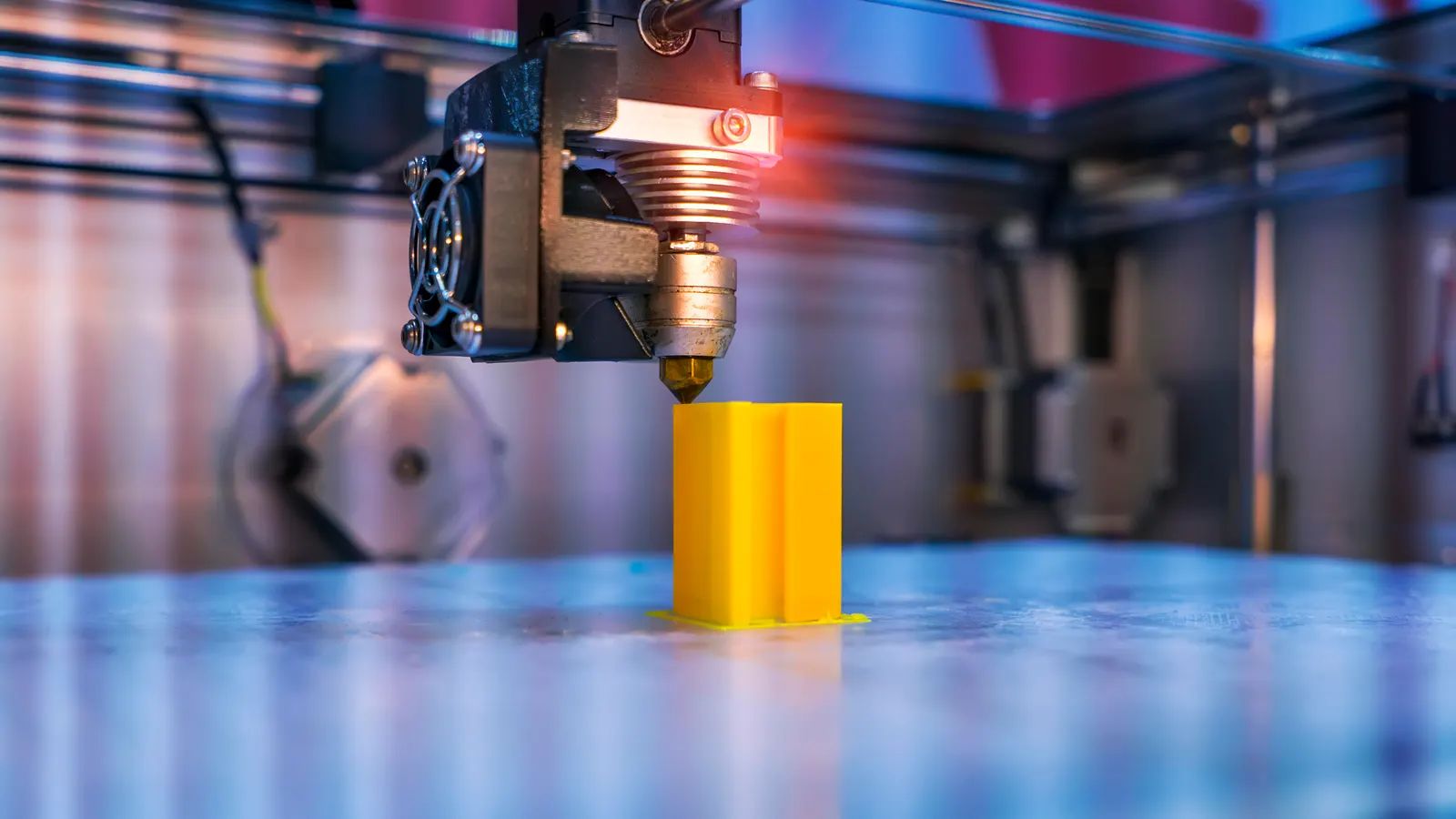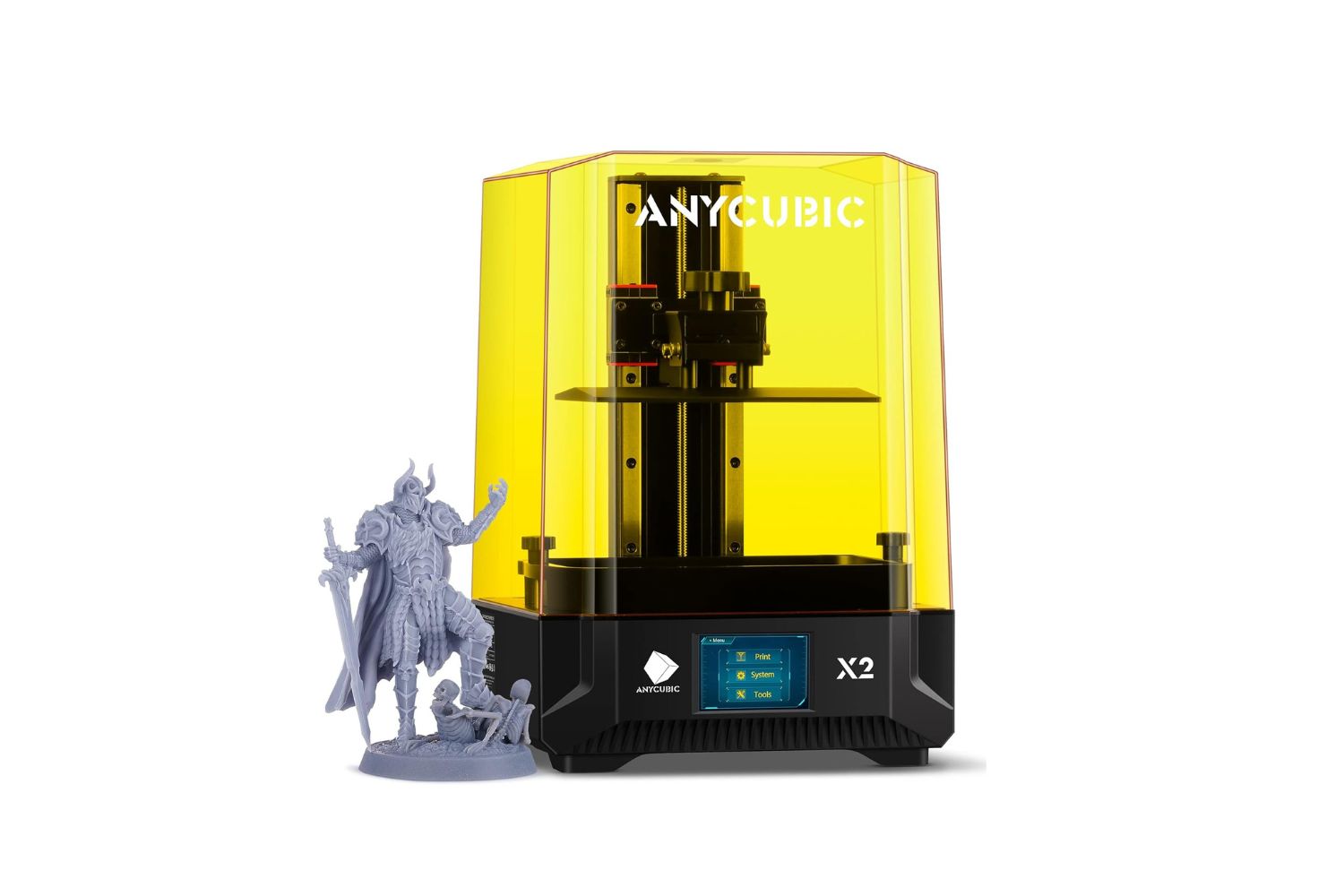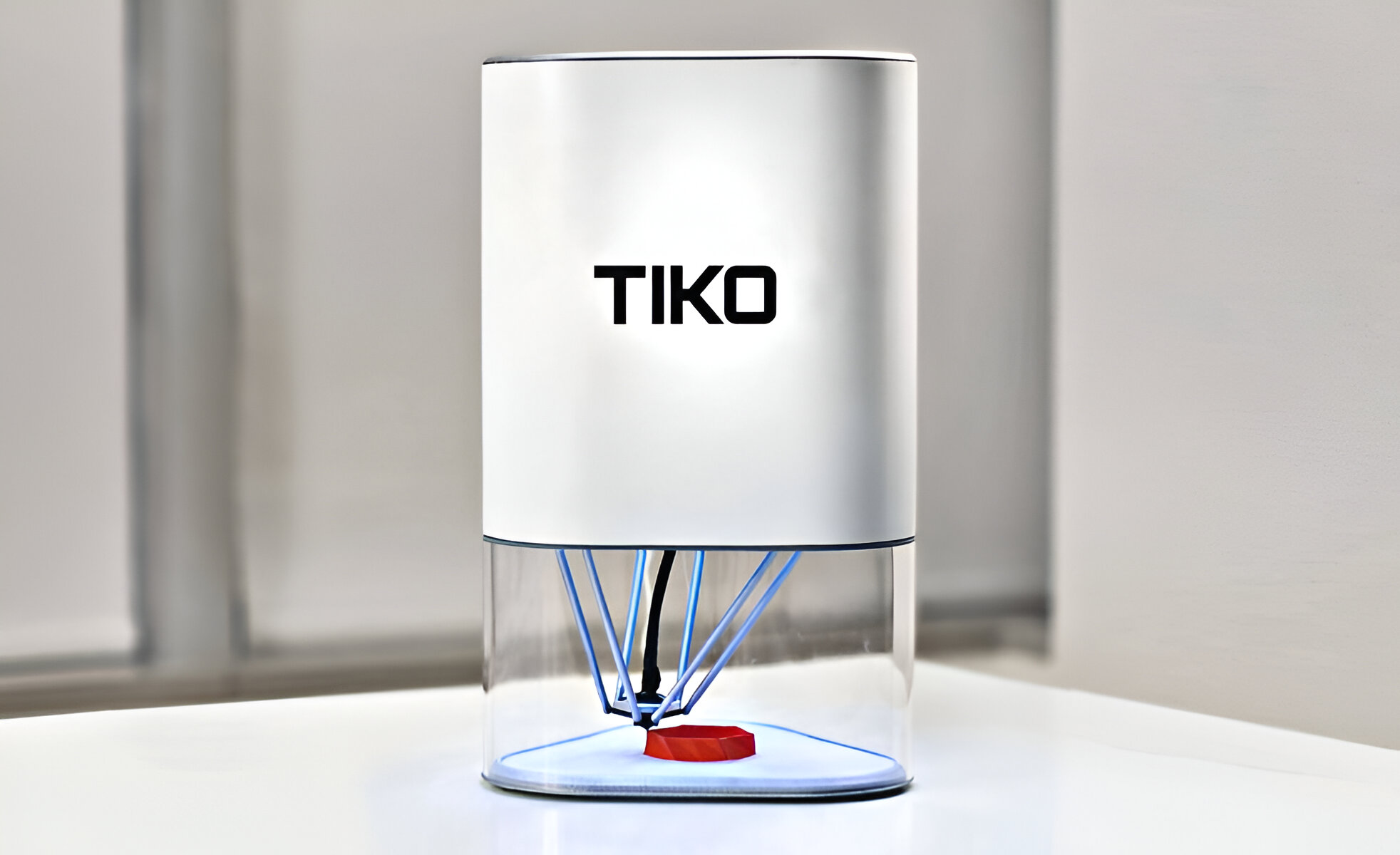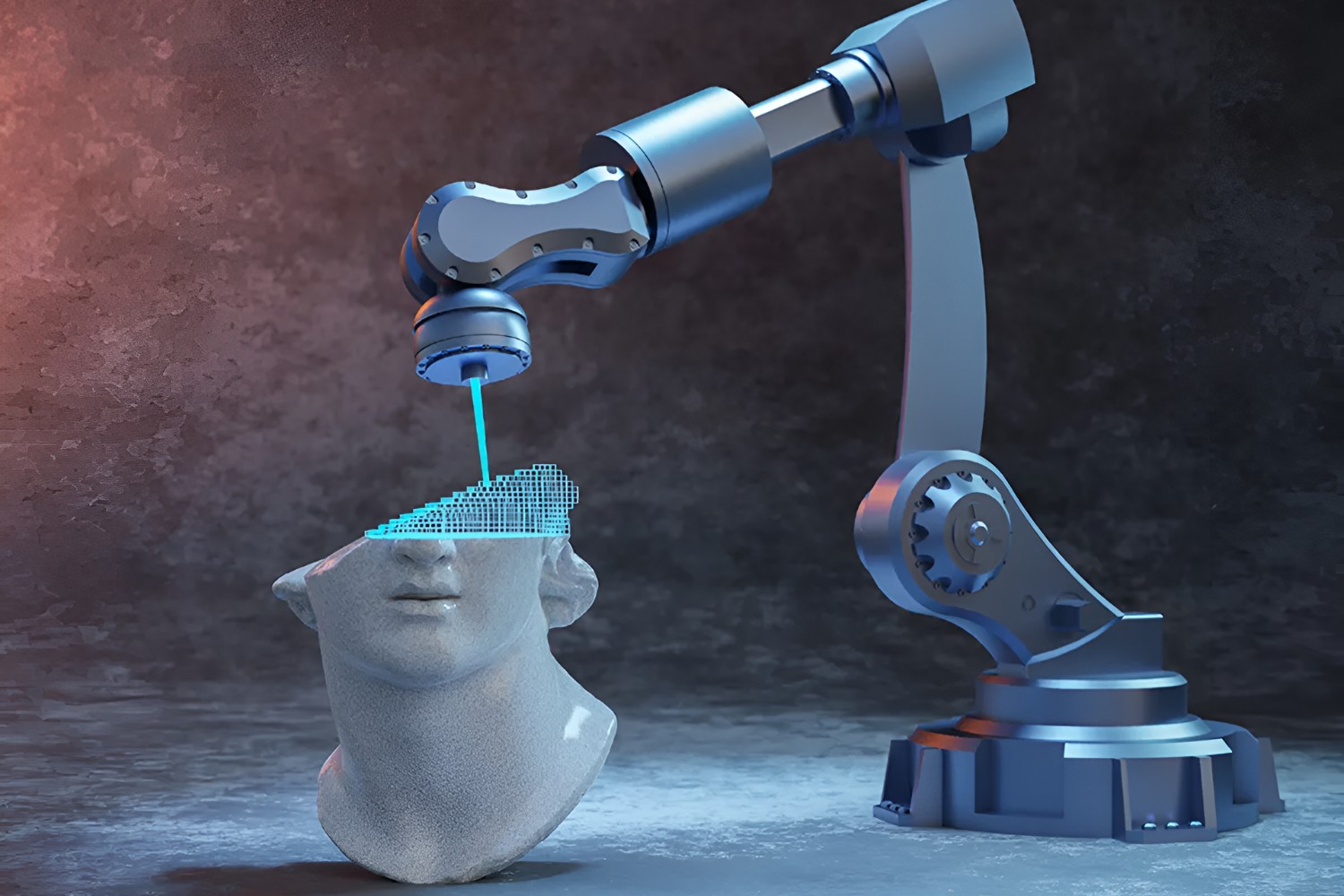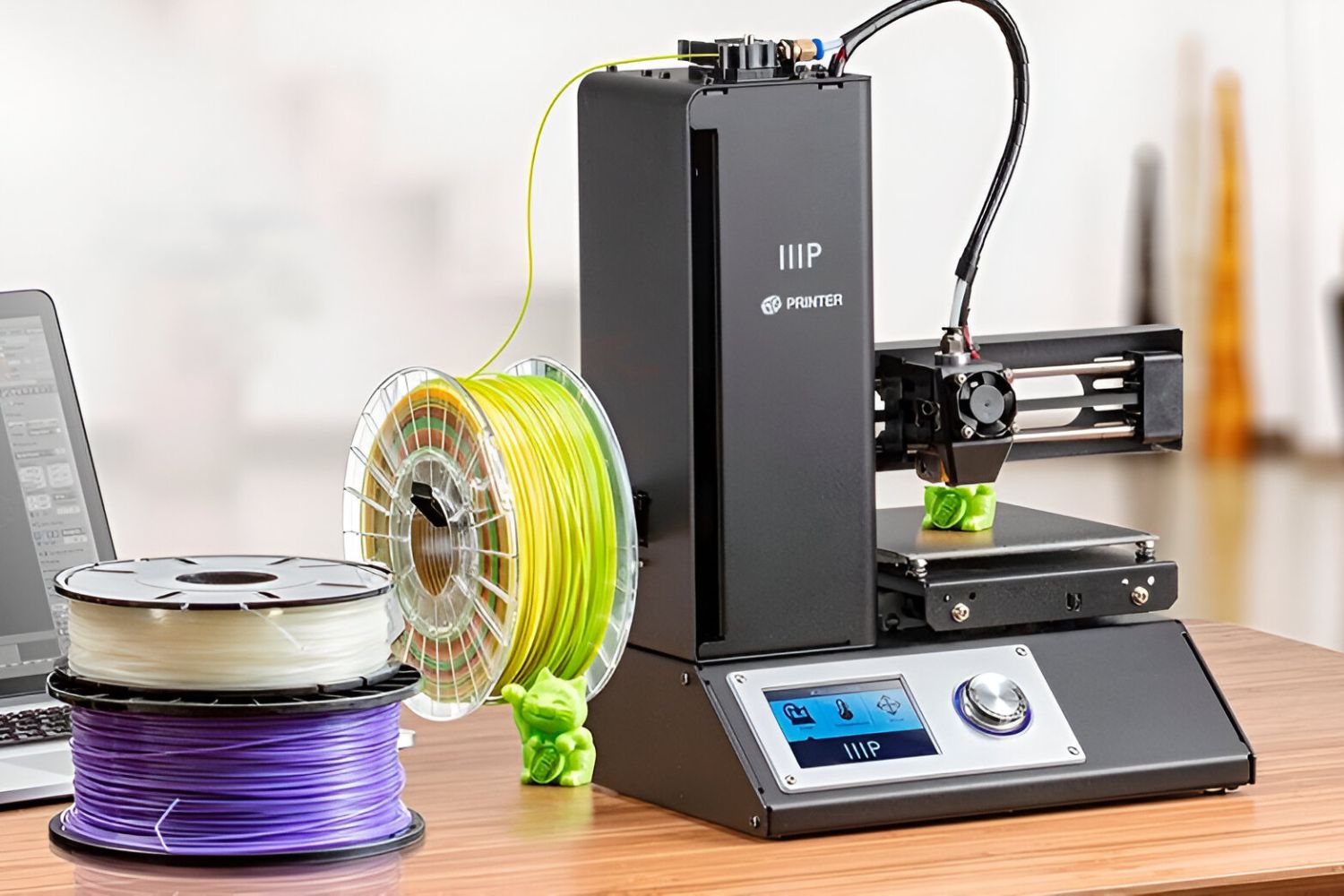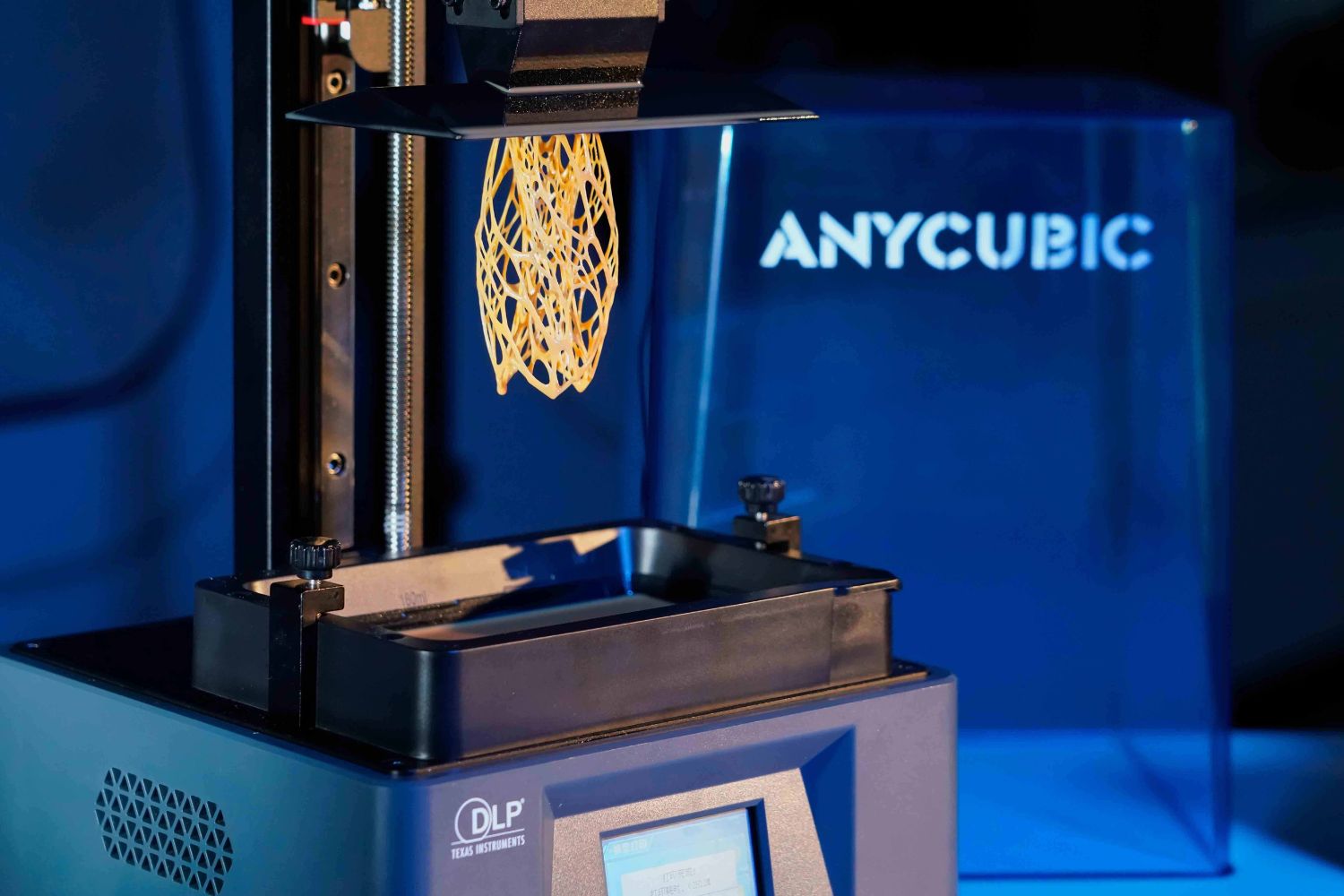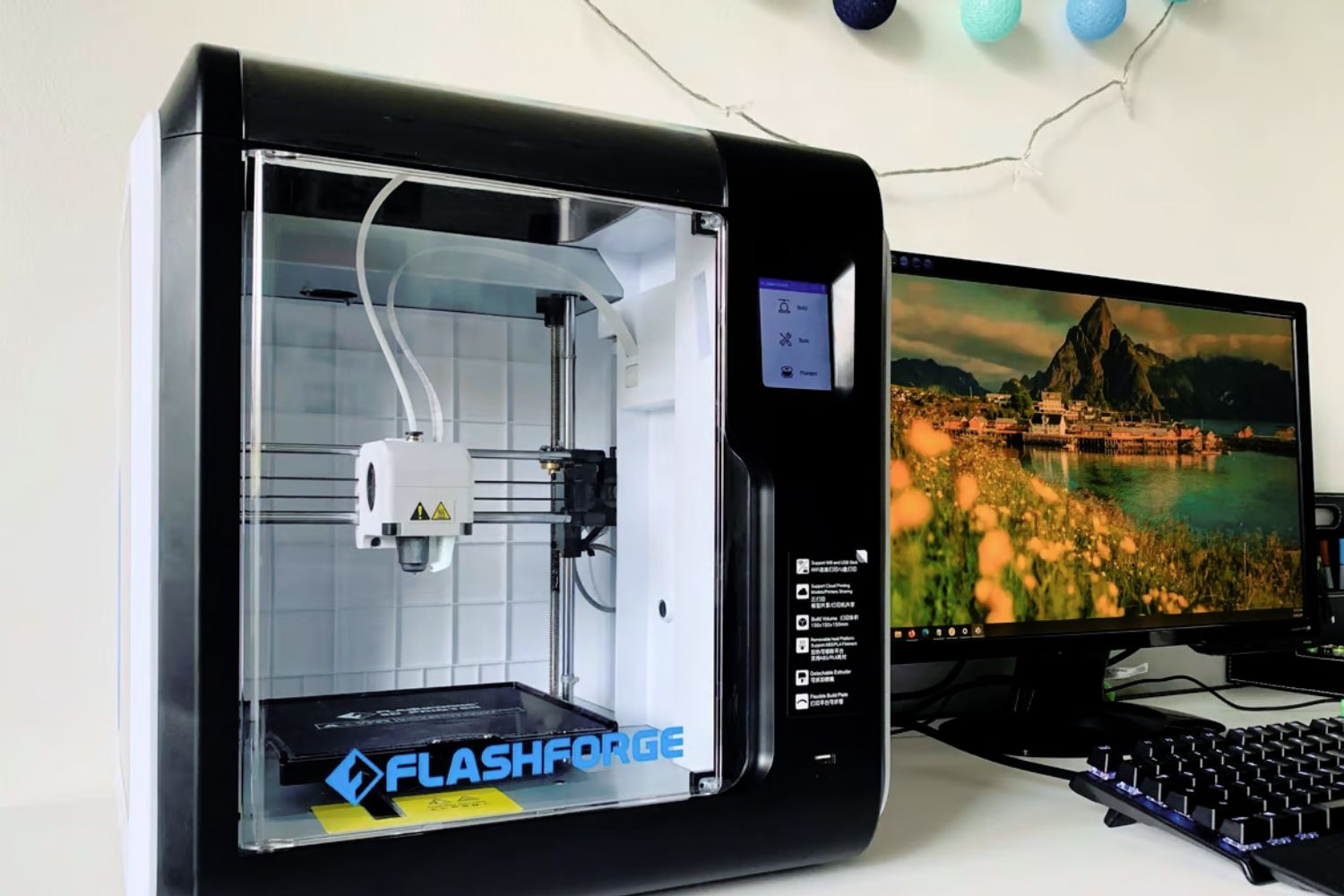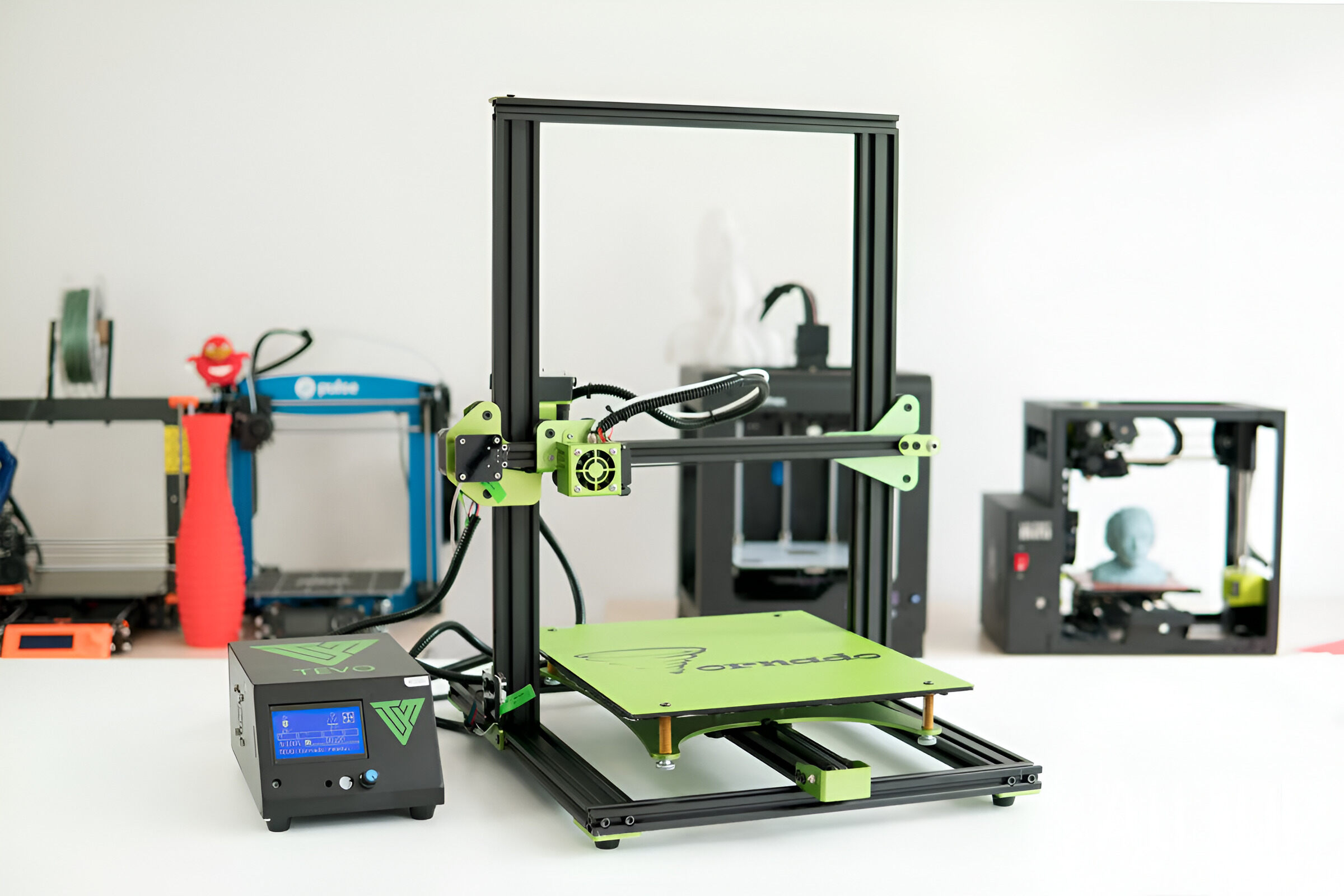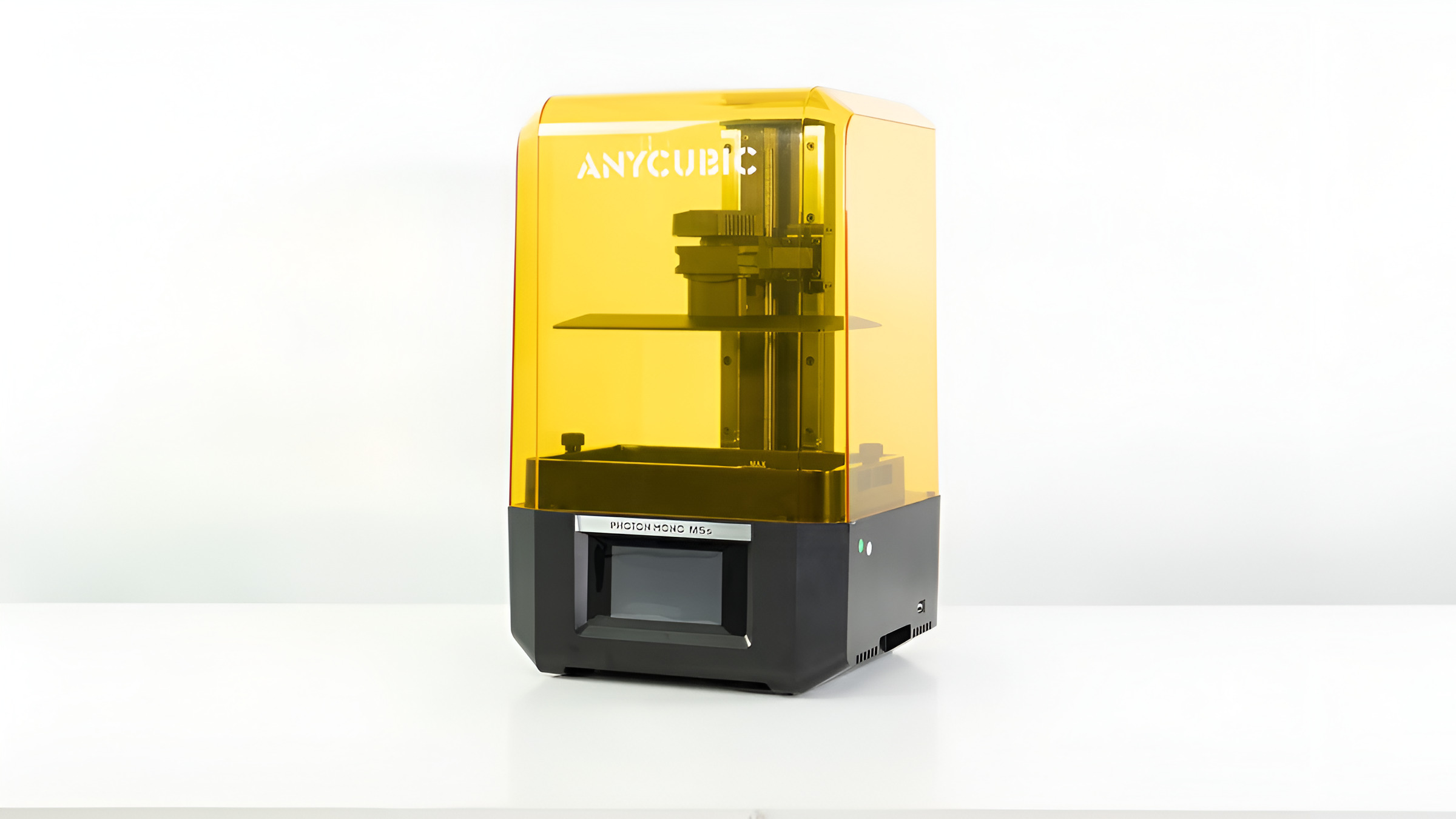Introduction
3D printing has revolutionized the manufacturing industry by allowing objects to be created layer by layer from various materials. This innovative technology has opened up limitless possibilities in fields such as engineering, medicine, architecture, and more. But have you ever wondered what materials a 3D printer uses to bring designs to life?
In this article, we will explore the different materials that are commonly used in 3D printing. From thermoplastics to metals, ceramics, and composites, each material offers unique properties and advantages for specific applications. Additionally, we will delve into the role of filaments and resins in the printing process, as well as other supporting materials that ensure successful prints.
By understanding the materials behind 3D printing, you will gain insight into the capabilities and potential of this revolutionary technology. So let’s dive in and discover the fascinating world of materials used in 3D printing!
Materials Used in 3D Printing
When it comes to 3D printing, a wide range of materials can be used to bring designs to life. The choice of material depends on the intended application, desired properties, and the type of 3D printing technology being utilized. Let’s explore some of the commonly used materials in 3D printing:
-
Thermoplastics
Thermoplastics are the most widely used materials in 3D printing due to their versatility and ease of use. They can be melted and solidified multiple times without undergoing any significant chemical changes. Common thermoplastics used in 3D printing include ABS (Acrylonitrile Butadiene Styrene), PLA (Polylactic Acid), and PETG (Polyethylene Terephthalate Glycol).
-
Photopolymers
Photopolymers are liquid resins that solidify when exposed to ultraviolet (UV) light or other sources of radiation. They are most commonly used in Stereolithography (SLA) and Digital Light Processing (DLP) printers. Photopolymers offer high resolution and smooth surface finishes, making them ideal for detailed models, prototypes, and dental applications.
-
Metal
Metal 3D printing has gained significant traction in industries where strength, durability, and heat resistance are crucial. Common metals used in 3D printing include titanium, aluminum, stainless steel, and cobalt chrome. Metal powders are typically fused together using processes like selective laser melting (SLM) or electron beam melting (EBM) to create intricate and functional metal parts.
-
Ceramics
Ceramics are not as widely used in 3D printing as other materials but offer unique advantages in terms of thermal and chemical resistance. Ceramic powders are often used to create intricate and heat-resistant parts for applications such as aerospace, electronics, and biomedical industries. Processes like ceramic stereolithography (CSL) and binder jetting are commonly employed for ceramic 3D printing.
-
Composites
Composites are materials made from a combination of two or more different materials, each contributing specific properties. Examples of composite materials used in 3D printing include carbon fiber composites and glass fiber composites. These materials offer high strength and stiffness while remaining lightweight, making them ideal for applications that require a balance between strength and weight.
Each material used in 3D printing offers its own set of benefits and limitations, making it essential to choose the right material for the intended application. With advancements in technology, the range of materials available for 3D printing continues to expand, opening up new possibilities for innovation and customization in various industries.
Thermoplastics
Thermoplastics are among the most commonly used materials in 3D printing due to their versatility and wide range of applications. These materials are known for their ability to be melted and solidified multiple times without undergoing any significant chemical changes. This characteristic makes them ideal for additive manufacturing processes like Fused Deposition Modeling (FDM) and Selective Laser Sintering (SLS).
One of the popular thermoplastics used in 3D printing is ABS (Acrylonitrile Butadiene Styrene). ABS offers good strength, impact resistance, and durability, making it suitable for functional prototypes and end-use parts. It can be found in a wide range of industries including automotive, consumer goods, and electronics.
Another widely used thermoplastic is PLA (Polylactic Acid). PLA is derived from renewable resources such as cornstarch or sugarcane, making it environmentally friendly. It has gained popularity among hobbyists and educators due to its ease of use, low odor, and biodegradability. PLA is commonly used for concept models, architectural models, and decorative objects.
PETG (Polyethylene Terephthalate Glycol) is another thermoplastic that has gained prominence in 3D printing. It offers excellent layer-to-layer adhesion, impact resistance, and chemical resistance. PETG is commonly used for functional parts, packaging prototypes, and items that require transparency or light transmission.
Thermoplastics used in 3D printing are typically available in filament form, which is loaded into FDM printers. The filament is heated and extruded through a nozzle, allowing it to be deposited layer by layer to create the desired object. The range of thermoplastic filaments available for 3D printing is vast, including additional materials like Nylon, TPU (Thermoplastic Polyurethane), and PC (Polycarbonate), each offering unique properties for specific applications.
As technology continues to advance, so does the range of thermoplastics used in 3D printing. Manufacturers are constantly developing new formulations and composite materials to enhance the mechanical properties, heat resistance, and aesthetics of printed objects.
Photopolymers
Photopolymers are a unique class of materials used in 3D printing that undergo a chemical reaction when exposed to ultraviolet (UV) light or other sources of radiation. This reaction causes the liquid resin to solidify and form the desired object. Photopolymer-based 3D printing technologies, such as Stereolithography (SLA) and Digital Light Processing (DLP), offer high-resolution prints with smooth surface finishes.
One of the key advantages of photopolymers is the ability to achieve intricate details and complex geometry. High-resolution components with fine details can be produced using SLA and DLP printers, making them ideal for applications that require precision engineering or visual appeal.
SLA printers use a laser or a light source to selectively cure layers of liquid photopolymer resin. The cured layers stack on top of each other to build the final object. SLA is commonly used in industries such as jewelry, dentistry, and prototyping, where accuracy and fine details are critical.
DLP printers, on the other hand, use a digital light projector to expose an entire layer of liquid photopolymer resin at once. This allows for faster printing speeds compared to SLA. DLP is commonly used for product design, architectural models, and dental applications, where speed and accuracy are important factors.
Photopolymer resins come in different formulations, each tailored for specific properties and applications. They can be transparent, opaque, or have specialized properties such as high temperature resistance or flexibility. Additionally, there are specialty photopolymer resins that simulate materials like rubber or simulate the look and feel of certain materials like wood or stone.
Although photopolymers offer great printing quality and high precision, they do have some limitations. The resulting prints may be more brittle compared to other materials, making them less suitable for functional applications that require durability or impact resistance. Additionally, the resin may require post-processing steps such as rinsing in isopropyl alcohol or UV curing to strengthen the final print and remove any uncured resin.
Despite these limitations, the ability of photopolymers to produce highly detailed and visually appealing prints makes them invaluable in industries where aesthetics and fine resolution are paramount.
Metal
Metal 3D printing has revolutionized the manufacturing industry by allowing complex metal parts to be produced with unparalleled precision and efficiency. This technology, also known as additive manufacturing or metal additive manufacturing, utilizes metal powders as the raw material.
Various metal alloys are used in 3D printing, including titanium, aluminum, stainless steel, nickel alloys, and cobalt chrome. These metals are chosen for their specific properties, such as strength, durability, heat resistance, and corrosion resistance, depending on the intended application.
The metal 3D printing process typically involves two main techniques: Selective Laser Melting (SLM) and Electron Beam Melting (EBM). Both methods selectively melt metal powders layer by layer to create fully dense, solid metal parts.
In SLM, a high-powered laser fuses together metal powders according to the design specifications. The laser selectively melts the metal particles, creating solid cross-sections that stack on top of each other to form the final part. This technique offers high resolution and intricate detail, making it suitable for applications in aerospace, medical, and automotive industries.
EBM, on the other hand, uses an electron beam to selectively melt the metal powders. The electron beam provides high energy density, allowing for faster print speeds compared to SLM. EBM is often used for producing large-scale components, such as aerospace parts.
Metal 3D printing enables designers and engineers to create complex geometries that are difficult or impossible to achieve with traditional manufacturing methods. It allows for the integration of multiple components into a single piece, reducing assembly time and complexity.
Post-processing of metal 3D printed parts is an important step to achieve the desired mechanical properties. Heat treatment, machining, polishing, and surface finishing are often utilized to enhance the final product’s strength, surface quality, and dimensional accuracy.
While metal 3D printing offers unmatched design freedom and manufacturing capabilities, it is important to note that it is a more expensive and specialized process compared to other 3D printing technologies. However, as advancements continue to be made in metal additive manufacturing, costs are gradually decreasing, making it more accessible for various industries.
Overall, metal 3D printing has opened up new possibilities in creating complex metal parts with customized geometries and optimized performance, driving innovation and advancements in a wide range of industries.
Ceramics
Ceramic 3D printing is a rapidly emerging technology that enables the production of intricate ceramic parts with high precision and complex geometries. Ceramics are known for their exceptional thermal, chemical, and electrical properties, making them ideal for a wide range of applications in industries such as aerospace, electronics, healthcare, and energy.
In ceramic 3D printing, ceramic powders are used as the raw material. These powders can be composed of various materials such as alumina, zirconia, porcelain, or customized ceramic blends to achieve different mechanical and thermal properties.
There are several methods used in ceramic 3D printing, including ceramic stereolithography (CSL), binder jetting, and material extrusion. Each of these techniques offers unique advantages and is suited for specific applications.
CSL involves using a photosensitive resin containing ceramic particles that solidify when exposed to light. This method allows for high-resolution prints with excellent surface finish. CSL is often used in the production of small, intricate ceramic components, such as jewelry, dental crown copings, and microfluidic devices.
Binder jetting, on the other hand, uses a liquid binder to selectively join ceramic powders layer by layer. Once the object is printed, it is then sintered in a kiln to achieve final strength and density. Binder jetting offers the ability to produce larger ceramic parts with intricate geometries and is commonly employed in architectural applications and the production of ceramic molds and cores for metal casting.
Material extrusion, similar to Fused Deposition Modeling (FDM) for thermoplastics, involves depositing layers of ceramic material through a nozzle. The printed object is subjected to post-processing steps such as drying, binder removal, and sintering to achieve the desired strength and density. Material extrusion is popular for prototyping and producing ceramic artworks and decorative objects.
Ceramic 3D printed objects can exhibit excellent thermal stability, high chemical resistance, electrical insulation, and biocompatibility. These properties make ceramics suitable for applications such as sensors, filters, rocket nozzles, dental implants, and bone scaffolds.
While ceramic 3D printing offers immense potential, the process can be complex and requires careful optimization of parameters, including particle size, binder formulation, and sintering conditions. Additionally, cost and material availability can be challenges, as certain ceramic powders may be expensive or limited in supply.
As the technology continues to advance, ceramic 3D printing is expected to play a significant role in the development of new ceramic materials and the production of complex, high-performance ceramic components with increased efficiency and design flexibility.
Composites
Composites are materials made by combining different substances, typically a combination of a polymer matrix and reinforcing fibers or particles. The resulting composite material offers a unique set of properties that are superior to those of the individual components alone. Composites have become increasingly popular in 3D printing due to their high strength-to-weight ratio and versatility.
One common type of composite used in 3D printing is carbon fiber composites. Carbon fiber is known for its exceptional strength and stiffness, making it ideal for applications that require lightweight yet durable components. In composite 3D printing, carbon fibers are combined with a polymer matrix to create parts that are both strong and lightweight.
Another type of composite used in 3D printing is glass fiber composites. Glass fibers are added to a polymer matrix to enhance strength and impact resistance. Glass fiber composites are commonly used in industrial applications, automotive components, and sporting goods where strength and durability are paramount.
Composite 3D printing offers several advantages over traditional manufacturing methods for composites. The additive nature of 3D printing allows for complex geometries and internal structures to be easily fabricated, enabling innovative designs and reducing the need for assembly. Additionally, 3D printing can minimize material waste and decrease production time compared to conventional composite manufacturing methods.
In composite 3D printing, fiber-reinforced filaments or resin-based composite materials are used as the printing material. These materials typically consist of a polymer matrix infused with reinforcing fibers or particles. During the printing process, the materials are heated and extruded through a nozzle or cured using light sources, depending on the specific 3D printing technology being utilized.
Composite 3D printing allows for the production of strong, lightweight parts with tailored properties, such as increased stiffness or improved heat resistance, depending on the choice of reinforcement material. The flexibility in composite material selection and customizable properties make it suitable for a wide range of applications across industries, including aerospace, automotive, and manufacturing.
It is important to note that the process of composite 3D printing requires careful consideration of material compatibility, optimal fiber alignment, and post-processing steps to achieve the desired mechanical properties. Additionally, the cost of composite materials can be higher compared to traditional polymer filaments.
As technology advances, the use of composites in 3D printing is expected to increase, opening up new opportunities for lightweight and high-performance applications across various industries.
The Role of Filaments and Resins
In 3D printing, the choice of filament or resin is crucial as it directly impacts the properties and characteristics of the printed object. Filaments and resins serve as the building blocks of the 3D printing process, providing the raw material that is transformed into the final product.
For Fused Deposition Modeling (FDM) printers, filaments are used as the printing material. Filaments are typically composed of thermoplastics or thermoplastic composites. These materials are extruded through a heated nozzle, which deposits thin layers of melted plastic in a specific pattern to form the object. The most common filament diameter is 1.75mm or 3mm, but it can vary depending on the printer.
Filaments come in a wide variety of materials, including ABS, PLA, PETG, Nylon, TPU, and more. Each material offers different properties such as strength, flexibility, heat resistance, and biodegradability. The choice of filament depends on the desired characteristics and the intended application of the printed object. Filament manufacturers provide specifications regarding optimal printing temperatures and other parameters to ensure successful prints.
For Stereolithography (SLA) and Digital Light Processing (DLP) printers, liquid resins are used instead of filaments. Resins are composed of liquid monomers or oligomers mixed with photoinitiators and other additives. The photoinitiators undergo a chemical reaction when exposed to UV light, causing the resin to solidify and form the desired object.
Resins come in various formulations, each tailored for different applications and properties. Some resins offer high resolution and smooth surface finishes, while others provide specific characteristics such as flexibility, high temperature resistance, or biocompatibility. Post-processing steps are usually required for resin prints, such as rinsing in isopropyl alcohol and curing under UV light to ensure the removal of any uncured resin and to strengthen the print.
Aside from filaments and resins, other supporting materials play a vital role in the 3D printing process. These include build plates, support structures, and adhesives.
Build plates provide a stable surface for printing and help to ensure proper adhesion of the printed object to the printer bed. Different materials are used for build plates, such as glass, aluminum, or specialized build plate coatings, depending on the specific 3D printing technology.
Support structures are often necessary for printing overhanging or complex geometries. These structures provide temporary support to prevent the printed object from sagging or collapsing during the printing process. They can be printed with the same material as the object or with a soluble material that can be easily dissolved or washed away post-printing.
Adhesives are used to help improve adhesion between the printed layers and the build plate. They are especially useful for certain materials like ABS, which may have difficulties adhering to the build surface without proper adhesion methods.
Overall, the choice of filaments, resins, and supporting materials plays a crucial role in the success and quality of the 3D printing process. Understanding the properties and characteristics of these materials is essential for achieving accurate and reliable prints in various applications.
Filaments for Fused Deposition Modeling (FDM) Printers
Fused Deposition Modeling (FDM) printers are widely used in 3D printing due to their affordability and versatility. These printers use filaments as the raw material for building objects layer by layer through the extrusion of melted plastic.
There is a wide variety of filaments available for FDM printers, each offering different properties and characteristics. Let’s explore some common types of filaments used in FDM printing:
-
ABS (Acrylonitrile Butadiene Styrene)
ABS is one of the most widely used filaments in FDM printing. It offers good strength, impact resistance, and durability. ABS has a higher melting point than other filaments, making it suitable for applications that require heat resistance. However, ABS has a tendency to warp during printing, so a heated print bed or adhesive is often needed to improve bed adhesion.
-
PLA (Polylactic Acid)
PLA is an environmentally friendly filament made from renewable resources such as cornstarch or sugarcane. It is easy to print with, has low odor, and is biodegradable. PLA offers good stiffness and surface finish, making it suitable for a wide range of applications, including concept models, decorative objects, and educational purposes. However, PLA is more brittle compared to ABS, so it may not be as suitable for functional parts that require impact resistance or flexibility.
-
PETG (Polyethylene Terephthalate Glycol)
PETG is a filament that combines the best properties of ABS and PLA. It offers good strength, impact resistance, and chemical resistance. PETG has a lower tendency to warp compared to ABS and does not require a heated print bed. It also provides better layer-to-layer adhesion, resulting in stronger prints. PETG is commonly used for functional parts, packaging prototypes, and objects that require transparency or light transmission.
-
Nylon
Nylon filaments offer high strength, durability, and flexibility. They have excellent layer adhesion and can withstand high temperatures. Nylon filaments are commonly used for functional parts that require toughness, such as gears, bearings, and mechanical components. Nylon is a versatile filament but can be more challenging to print due to its higher printing temperatures and moisture sensitivity.
-
TPU (Thermoplastic Polyurethane)
TPU is a flexible filament that exhibits exceptional elasticity and impact resistance. It is commonly used for producing flexible parts and prototypes, such as phone cases, shoe soles, and gaskets. TPU filaments have good layer adhesion and excellent chemical resistance. The flexibility of TPU makes it suitable for applications that require stretchability and shock absorption.
These are just a few examples of the many filaments available for FDM printing. Other filaments, such as PC (Polycarbonate), wood-filled, metal-filled, and carbon fiber-filled filaments, offer unique properties for specific applications.
When choosing a filament for FDM printing, it is important to consider factors such as the desired mechanical properties, surface finish, printability, and environmental impact. Each filament has its strengths and limitations, so understanding these characteristics will help you select the right filament for your specific application.
Resins for Stereolithography (SLA) Printers
Stereolithography (SLA) is a 3D printing technology that uses liquid resins and UV light to produce high-resolution, detailed prints. SLA printers offer excellent surface finish and accuracy, making them popular in applications that require precision and intricate details.
There are various types of resins available for SLA printers, each designed to meet specific application requirements. Let’s explore some common types of resins used in SLA printing:
-
Standard Resins
Standard resins are the most common and versatile type of resin used in SLA printing. They offer a balance of mechanical properties, resolution, and ease of use. Standard resins are often used for concept models, prototypes, and visual models. They come in a range of colors, allowing for customized aesthetics.
-
Flexible Resins
Flexible resins are designed to produce parts that are bendable and rubber-like. These resins are ideal for applications where flexibility, shock absorption, or tactile properties are desired. Flexible resins are used in industries such as footwear, robotics, and consumer goods.
-
High-Temperature Resins
High-temperature resins are capable of withstanding elevated temperatures without warping or losing their mechanical properties. These resins are commonly used in applications that involve heat resistance, such as mold making, jigs, and fixtures, or under-the-hood automotive parts.
-
Dental Resins
Stereolithography has found significant use in the dental industry. Dental resins are specifically formulated for dental applications, such as the production of dental models, surgical guides, and clear aligners. These resins offer high-precision, biocompatibility, and dental-grade aesthetics.
-
Castable Resins
Castable resins are designed to burn out cleanly during the investment casting process. They allow for the production of intricate and detailed patterns that can be used to create metal parts. Castable resins are commonly used in jewelry making and small-scale production of metal components.
Each resin type has its own specific curing requirements, such as optimal exposure times and post-curing considerations. It is important to follow the manufacturer’s recommendations to achieve the desired print quality and mechanical properties.
When working with SLA printers and resins, it is crucial to handle them with care and follow proper safety precautions. Resins can be toxic and may require the use of personal protective equipment (PPE) and proper ventilation.
By selecting the appropriate resin for your SLA printing needs, you can achieve highly detailed and precise prints with excellent surface quality. Understanding the characteristics and capabilities of different resin types will enable you to choose the right material for your specific applications.
Other Support Materials
In addition to filaments and resins, there are several other support materials that play a crucial role in the 3D printing process. These materials ensure successful prints and aid in the overall printing experience.
-
Build Plates
Build plates serve as the foundation for the printed object during the printing process. They provide a stable surface for the first layer of material to adhere to and help maintain proper alignment throughout the printing process. Different materials are used for build plates, such as glass, aluminum, or specialized build plate coatings, depending on the specific 3D printing technology being used.
-
Support Structures
Support structures are temporary structures that are generated during the printing process to provide stability for overhanging or complex geometries. These structures serve as scaffolding to support the upper layers and prevent sagging or collapsing during the printing process. Support structures can be printed with the same material as the object or with a soluble material that can be dissolved or washed away post-printing.
-
Adhesives
Adhesives are commonly used in FDM printing to help improve bed adhesion between the first layer of the print and the build plate. Certain filaments, such as ABS, may have difficulty adhering to the build surface, especially if it’s not heated or if the bed surface is not optimal. Adhesives, such as glue sticks, hairspray, or specialized adhesives designed for 3D printing, can be applied to the build plate to improve adhesion and prevent warping or lifting.
These support materials are essential for ensuring successful prints and maximizing the performance of 3D printers. They contribute to bed adhesion, stability during printing, and efficient print removal. Correctly using and maintaining these materials can significantly improve the overall print quality and success rate.
It’s important to follow the manufacturer’s guidelines and recommendations when working with support materials. Some printers may require specific adhesives or have specific bed preparation requirements for optimal printing results. Additionally, proper post-processing techniques should be employed to remove support structures or improve the surface finish of the printed object.
By understanding and utilizing these support materials effectively, you can enhance the reliability, efficiency, and overall quality of your 3D printing process.
Build Plates
Build plates play a crucial role in the 3D printing process, providing a stable surface for the creation of printed objects. They serve as the foundation on which the first layer of material is deposited and help maintain proper alignment and adhesion throughout the printing process. Build plates are an essential component of both Fused Deposition Modeling (FDM) and Stereolithography (SLA) printers.
Build plates come in various materials, with each having its own unique properties and benefits. The choice of build plate material depends on the specific 3D printing technology being used and the requirements of the print job. Let’s explore some common types of build plates:
-
Glass
Glass build plates are a popular choice due to their flatness and excellent heat conductivity. They provide a smooth, level surface for the first layer of material to adhere to. Glass build plates are often used in FDM printers with heated print beds, as they distribute heat evenly, promoting consistent adhesion and minimizing warping. They are also used in SLA printers for their optical clarity and compatibility with UV-curable resins.
-
Aluminum
Aluminum build plates offer durability and excellent heat distribution. They are commonly used in FDM printers with heated print beds to ensure consistent heat throughout the printing process. Aluminum build plates provide good adhesion and are less prone to warping. They are popular among users who require high-performance prints and larger build volumes.
-
Specialized Build Plate Coatings
Some printers feature specialized build plate coatings designed to improve adhesion and ease of print removal. These coatings may include materials such as polyimide (e.g., Kapton tape), textured surface treatments, or adhesion-promoting sprays. These coatings help ensure strong bed adhesion during the printing process while allowing for easy removal of the finished print.
When working with build plates, it is important to ensure proper leveling and cleanliness. A level build plate is critical to achieve consistent layer heights and prevent printing issues such as skewed or misaligned layers. Regular maintenance, including periodic cleaning of the build plate surface and applying appropriate adhesion methods, is essential for successful prints.
Additionally, some printers may utilize additional features to assist with print adhesion. For example, some FDM printers include a built-in heated print bed, which helps improve the bonding between the object and the plate. Others may offer options for different surface textures or incorporate mechanisms to aid in the easy removal of prints, such as flexible build plates or magnetic build plate systems.
Understanding the characteristics and requirements of different build plate materials and proper build plate maintenance is vital for achieving successful and high-quality 3D prints. Properly selected and maintained build plates help ensure strong adhesion, uniform layer thickness, and minimize the chances of print failures or warping.
Support Structures
Support structures are an integral part of the 3D printing process, especially when printing objects with overhangs, complex geometries, or intricate details. These temporary structures provide stability and prevent sagging or collapsing during the printing process. Support structures are essential to ensure the successful fabrication of complex shapes and maintain the integrity of the printed object.
The need for support structures arises due to the limitations of 3D printing technologies. Some printing methods, such as Fused Deposition Modeling (FDM) or Stereolithography (SLA), require layers to be deposited onto a build plate or previously printed layers. This can pose challenges when printing overhanging or unsupported features as the molten or liquid material needs a solid surface to adhere to for proper structural integrity.
Support structures are generated automatically by slicing software based on the design of the object and the orientation chosen by the user. These structures are typically generated as a lattice network or dense grid, created either in the same material as the main object or with a separate support material that can be easily removed post-printing.
There are different ways to remove support structures, depending on the material used and the 3D printing technology employed. For FDM prints, supports are typically made from the same material as the object and can be removed using tools like pliers or a flush cutter. For SLA prints, the support structures are often made from a soluble material or a different resin that can be dissolved or washed away using a specific solution.
Proper orientation of the object during the printing process can help minimize the need for excessive support structures. By considering the design and incorporating features such as chamfers or fillets, it is possible to optimize the print orientation and reduce the requirement for extensive support structures. However, it is important to strike a balance between minimizing support structures and maintaining the desired quality and accuracy of the final print.
It is worth noting that post-processing steps may be necessary after removing support structures to achieve a desired finish. Sanding, filing, or further surface treatment may be required to smooth any imperfections or marks left by the supports.
Understanding support structure generation, removal techniques, and design considerations will help ensure successful prints with minimal reliance on supports, resulting in high-quality, accurate, and visually appealing 3D printed objects.
Adhesives
Adhesives play a crucial role in 3D printing, particularly in Fused Deposition Modeling (FDM) when it comes to improving bed adhesion and ensuring successful prints. Certain materials, such as ABS, may have difficulty adhering directly to the build plate, especially if the bed is not heated or if the surface is not optimal. Adhesives are used to enhance the bond between the first layer of the print and the build plate, promoting better adhesion and preventing warping or lifting during the printing process.
There are several types of adhesives commonly used in 3D printing. Let’s explore a few of them:
-
Glue Sticks
Glue sticks, also known as washable glue or crafting glue, are a popular choice for improving bed adhesion in FDM printing. These water-soluble adhesives provide a tacky layer on the build plate, allowing the first layer of the print to securely adhere. Glue sticks are easy to apply and remove, and they help minimize warping and ensure a strong bond between the print and the build surface.
-
Hairspray
Hairspray is another widely used adhesive for FDM printing. The sticky properties of hairspray help enhance bed adhesion. It is important to note that not all hairsprays are suitable for 3D printing. It is recommended to use hairsprays that contain high amounts of the polymer PVA (polyvinyl acetate) for better adhesion. Hairspray is easily applied by spraying a thin layer onto the build plate and then allowing it to dry before starting the print.
-
Specialized Adhesives
There are adhesives specifically designed for 3D printing purposes. These adhesives are formulated to provide optimal bed adhesion for different kinds of materials. Some examples include 3D printing adhesion sprays or adhesive pads. These specialized adhesives offer convenience and can provide better results when compared to generic adhesives.
The choice of adhesive largely depends on the specific requirements of the material being printed and the preferences of the user. Experimenting with different adhesives and finding the one that works best for your printer, build surface, and filament will help achieve reliable bed adhesion and minimize print issues.
When applying adhesives, it is essential to do so in a thin and even layer. Applying too much adhesive can result in excess build-up or uneven surfaces, leading to print defects. It is also important to clean and prepare the build plate before applying the adhesive to ensure proper adhesion and the removal of any previous residue.
While the use of adhesives can significantly improve bed adhesion, it is important to note that they may not be necessary for all filaments or build surfaces. Some materials, such as PLA, may not require additional adhesives if the build surface is clean and provides sufficient adhesion.
By properly utilizing adhesives in the 3D printing process, users can achieve better bed adhesion, reduce the risk of print failures, and enhance overall print quality.
Conclusion
3D printing has revolutionized the manufacturing industry, allowing for the creation of complex and customized objects with incredible precision. The choice of materials in 3D printing plays a crucial role in determining the strength, durability, flexibility, and overall quality of the printed objects.
Thermoplastics, such as ABS, PLA, and PETG, are popular choices for Fused Deposition Modeling (FDM) printers, offering versatility and ease of use. These materials are widely used in various industries for functional prototypes, end-use parts, and concept models.
Photopolymers are commonly used in Stereolithography (SLA) printers, providing high resolution and smooth surface finishes. These resins are suitable for applications that require precise details and visual appeal, such as jewelry, dental models, and architectural prototypes.
Metal 3D printing has opened up new possibilities in industries where strength, durability, and heat resistance are paramount. Metal alloys such as titanium, aluminum, stainless steel, and cobalt chrome offer exceptional properties for aerospace, automotive, and medical applications.
Ceramic and composite materials enable the production of parts with exceptional thermal, chemical, and electrical properties. Ceramic 3D printing allows for the creation of intricate and heat-resistant components, while composites offer a balance of strength and weight for applications requiring light and strong structures.
In addition to materials, support structures, build plates, and adhesives play vital roles in ensuring successful 3D prints. Support structures provide stability for complex geometries, build plates offer a solid foundation for printing objects, and adhesives improve bed adhesion, reducing the risk of warping or lifting during the printing process.
As 3D printing technology continues to advance, we can expect to see further developments in materials, supporting materials, and printing techniques. This will expand the capabilities and applications of 3D printing, enabling new possibilities for innovation and customization across a wide range of industries.
It is important for users to understand the properties and characteristics of different materials and supporting materials to make informed choices for their specific applications. By leveraging the right materials and utilizing proper techniques, one can achieve high-quality, functional, and visually stunning 3D printed objects.







